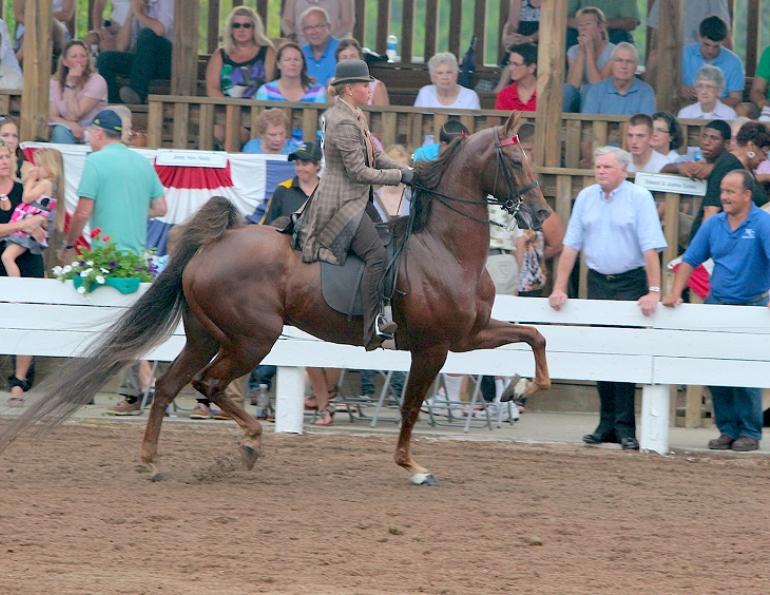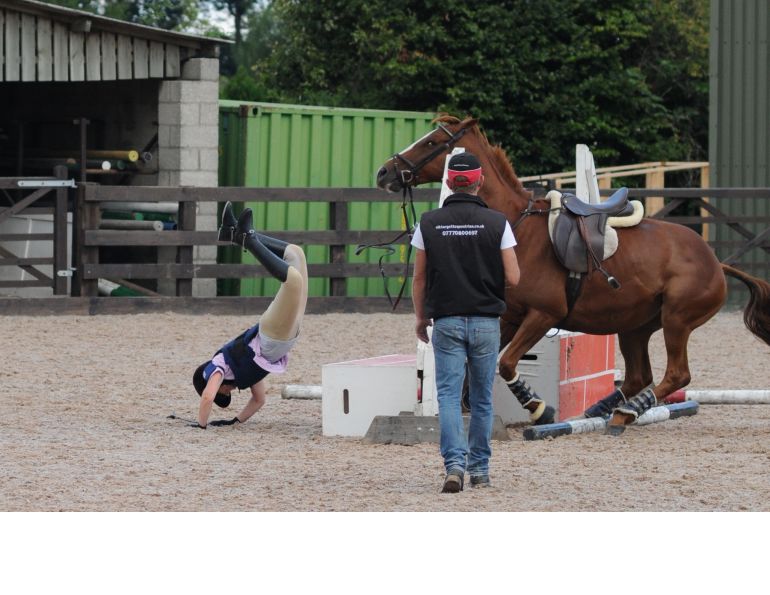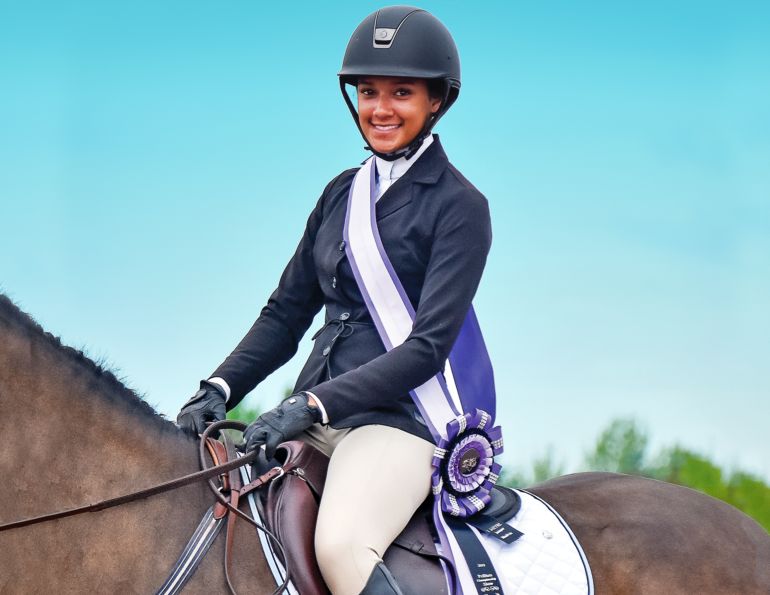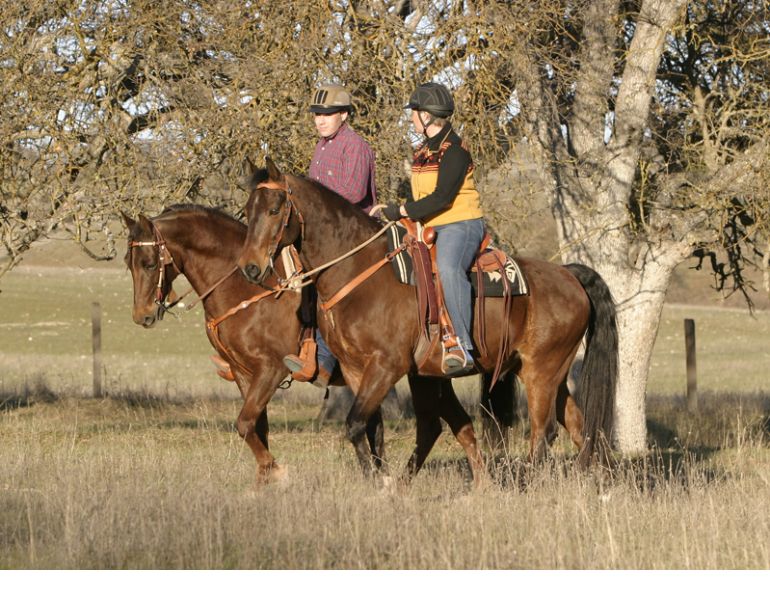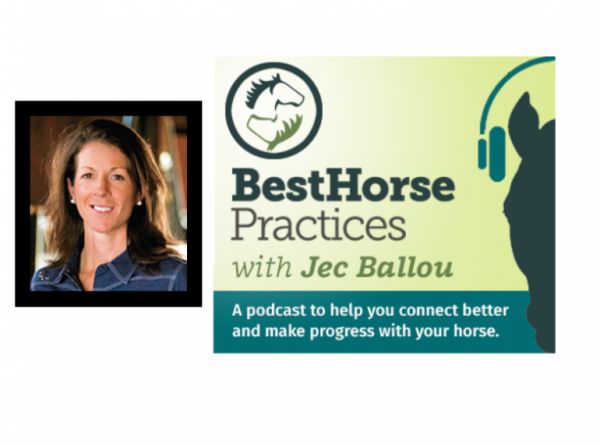By Equine Guelph
Experienced riders know that riding is risky business. Falls and other horse-related injuries are a real possibility, and even top riders cannot prevent all riding-related accidents.
Regardless of your riding discipline, wearing a helmet is one of the best ways to minimize the chance of suffering a brain injury. Safety starts before a foot even touches the stirrup, and 20 percent of accidents which result in head injuries happen while the person is on the ground. It is not uncommon for an incident to occur while mounting and no discipline is without risk when it comes to falling off.
We’ve all heard the excuses – I ride Western… I am an experienced rider… I know how to fall safely… but times are changing. Wearing a helmet became mandatory at all levels of Equine Canada dressage competitions as of December 1, 2012: All athletes, regardless of age or level of competition, must wear properly fitted and fastened safety approved protective headgear at all times when mounted at any EC-sanctioned Dressage competition at the event location.
“Regardless of age or level of competition” brings to mind an old but true adage: Beginner riders fall off; experienced riders get launched. Your level of experience matters not when you are dealing with an unpredictable animal possessing a fight-or-flight response. Although speed and height (i.e., jumping fences) can add impact, a hoof skipping across your cranium if your horse spooks and you slide off at a walk can be every bit as damaging. Everyone hits the dirt at some point, which makes the purchase of a correctly fitted, ASTM/SEI certified riding helmet a wise investment in reducing the chance of head injury.
Getting the Right Fit
The first step is purchasing a new helmet. Buying used is not recommended because you cannot tell if a used helmet has been damaged just by looking at it. If you have long hair, wear it in a low ponytail; tucking your long locks up into the helmet will not give you a secure fit.
Helmet fitting tips:
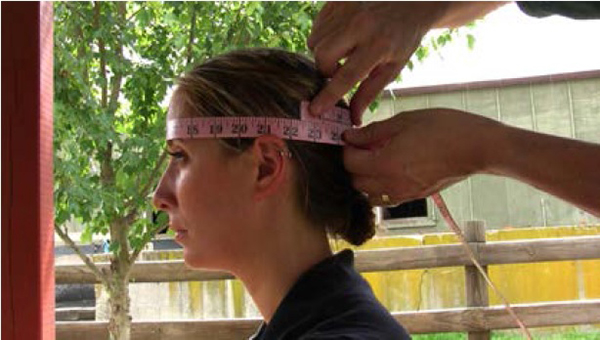
Step 1: Style your hair as you usually wear it while riding, and measure the circumference of your head to find your helmet size. Measure the widest part of your head, which is typically about an inch above your eyebrows and includes the prominent rounded area on the back of the head. A measuring tape in centimeters yields the most accurate result;
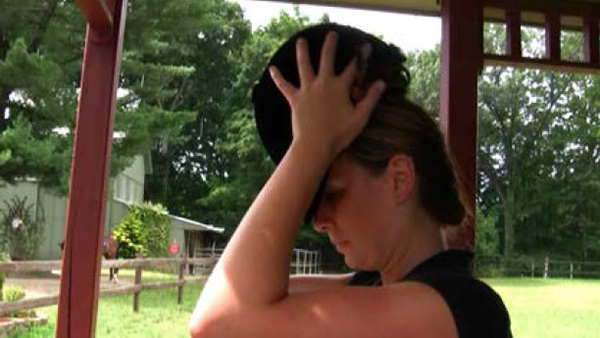
Step 2: Holding the straps out of the way, put the helmet on from front-to-back;
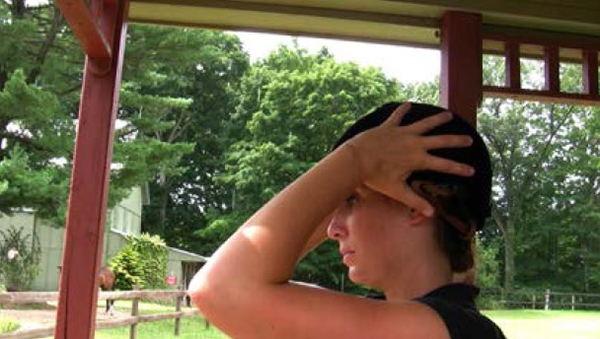
Step 3: Push down all the way on the rear of the helmet, forcing out all the air until the helmet is touching the top and back of your head;
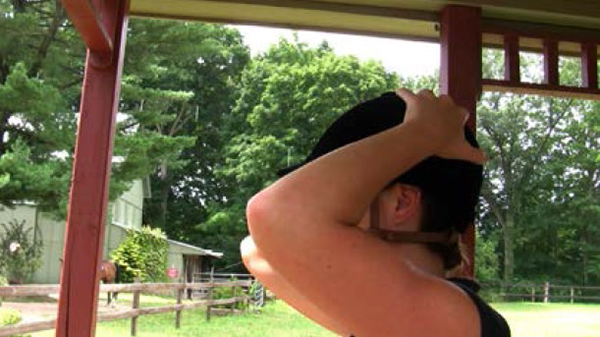
Step 4: The helmet should feel comfortable and should not feel tight, nor should it feel loose enough to slide out of position during vigorous movement;

Step 5: If the helmet feels right, bend forward and shake your head from side to side. If the helmet stays in place then it fits properly;

Step 6: Adjust and buckle the straps to fit snugly. There should be no gap between chinstrap and chin. The visor should be just above the eyebrows and parallel to the ground.
Helmet shapes vary among styles and brands, so be sure to choose a helmet that is right for the shape of your head. Helmets are also customized for different disciplines, and offer many options for comfort and style.
Always select a helmet that is specific to horse riding - protection ratings and fit vary from one sport to another. Consult with the fitting specialist at the tack store for assistance in choosing and fitting the correct helmet.
Do helmets have expiry dates?
Helmet materials degrade, so replacement is recommended every four to five years, and always after an impact. Impact includes dropping the helmet from a shelf, so be sure to store and handle your helmet carefully.
Wear your helmet whenever you are around horses. Set a good example and take steps to minimize your risk of becoming a statistic.
Reprinted with the kind permission of Equine Guelph.




